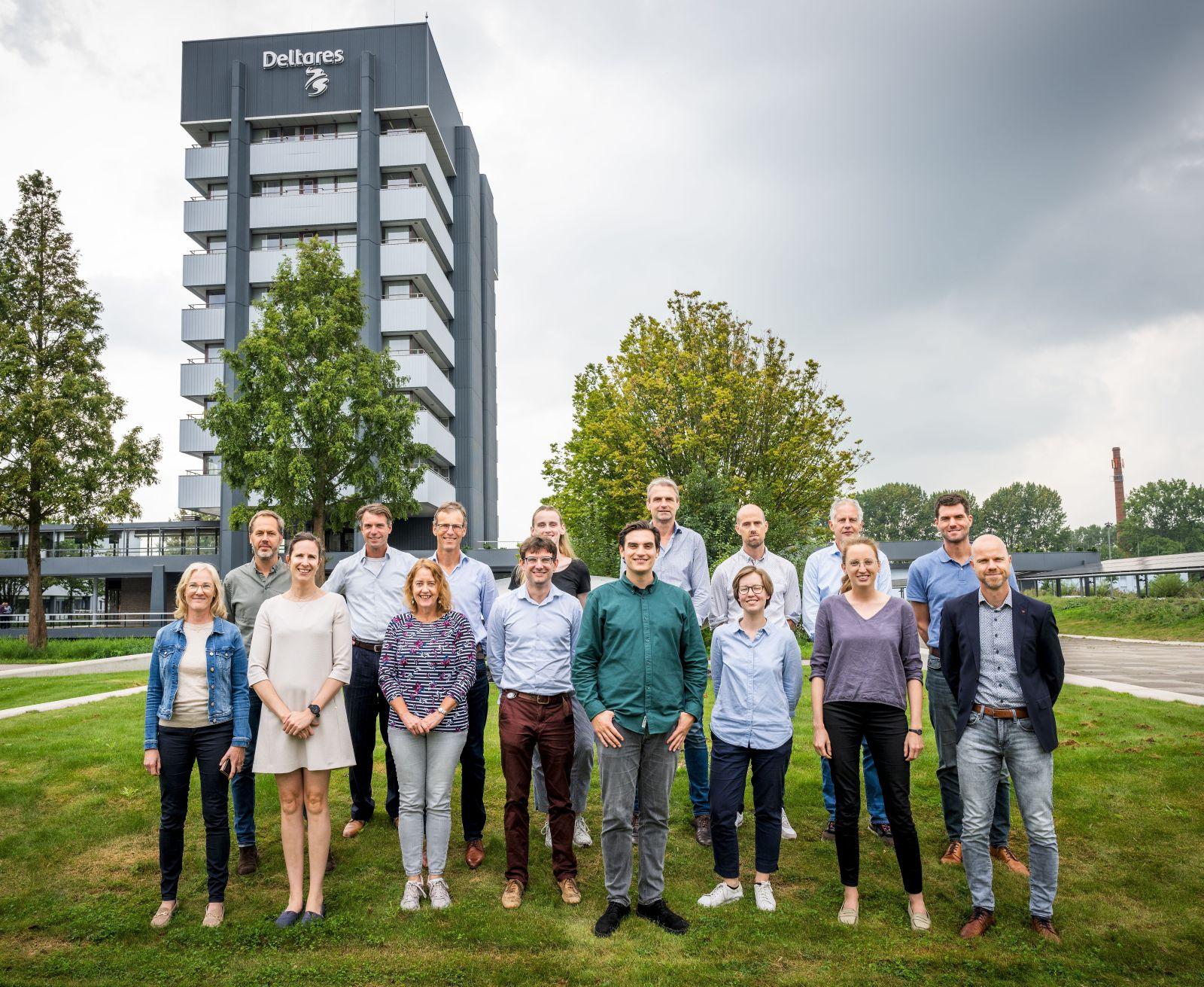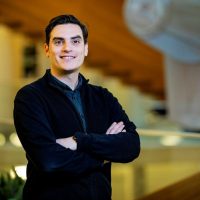Shaping a shared future for the North Sea
The number of wind turbines in the North Sea is growing rapidly. Good news for the energy transition, but the North Sea was already pretty crowded. Shipping, fishing and fossil fuel extraction also take place there, while new users are already presenting themselves: from floating solar parks to hydrogen production. Together with stakeholders, Deltares, TNO and MARIN investigated multifunctional use, or: how to make wind farms suitable for multiple users.

“The Dutch perspective on usage of the North Sea has tilted in recent years,” says Antonios Emmanouil, researcher and adviser in the area of hydrodynamics and offshore technology at Deltares. “When the first wind farms were constructed in the North Sea, the fishing industry was compensated so that they could use that space exclusively.” After all, the dragnets could easily damage electricity cables on the seabed, so a spatial separation of users seemed inevitable.
Seaweed as food
Now that the energy transition is gaining momentum, it is clear that a large portion of the Dutch part of the North Sea will be taken up by offshore wind farms. “So there is space for a new paradigm,” says Emmanouil. The big question is: how can we, alongside the wind turbines, make space for other uses of the North Sea?
This could include other forms of fishing, the cultivation of seaweed as food, or new forms of energy generation: floating solar panels, or tidal and wave energy. Or it could include space for the restoration of nature itself, which is already under considerable pressure in the North Sea.
Roadmap
This multi-functional approach or “symbiosis” focuses on the Road2SID research project (Roadmap for technological advancements needed for Symbiosis Inclusive Design in offshore wind) that is coordinated by Deltares. The aim was to draw up a roadmap of the technological and administrative developments needed to combine 22 gigawatts of wind farms with other uses by 2030, in anticipation of the target of 70 gigawatts by 2050.
Other participants were offshore installation companies Boskalis, Van Oord and Seaway7, energy companies Shell and RWE, and the grid operator TenneT. The roadmap they created distinguishes three categories of North Sea “users”:
- energy
- food
- nature
Based on these categories, the roadmap makes recommendations, such as making clarifying and simplifying conditions for procurement (energy), promoting pilot projects (food), and incentivising open data, for example for ecological monitoring (nature).
It is quite unique that offshore wind farms are viewed from such a broad perspective.
Willem Wagenaar, TNO
Willem Wagenaar thought the multidisciplinary project to be “very complex and ambitious”. Wagenaar is a researcher and project manager for TNO. He has a background in physics. “It is quite unique that offshore wind farms are viewed from such a broad perspective. However, it is wise to broaden your gaze.”
Appreciation
“We had three teams for the three subjects”, says fellow researcher Floor Spaargaren, shipbuilding engineer and project manager at MARIN, the maritime research institute.
“Of course, every institute contributes its own specific knowledge. At MARIN, for example, we look at the technical feasibility of vessels and offshore structures, and then focus on how to make them installable so that they do not pose any risks to shipping, and are able to last long in rugged offshore conditions.”
“Yet”, she says, “the challenges were more often beyond the institute-specific know-how.” “If you want to evaluate a seaweed farm, for example, you have to consider ecological aspects. That is where we really appreciate collaborations with other parties, such as Deltares, who knows all about underwater nutrient flows.”
Business cases
“The involvement of business partners from the business community has surprised me in a positive sense”, says TNO researcher Willem Wagenaar, “for example, they often employ specific people who are totally concerned with the ecological aspects of offshore wind.”
“An unexpected aspect of the study was the importance of governance and policy measures”, says Emmanouil, looking back. “Initially we were focused on technology and innovation, but interestingly, we soon discovered that business cases and innovation are often highly dependent on policy. The requirements and goals that are set as a government, determine which technologies are stimulated."
Follow-up
This is also endorsed by Wagenaar with “regulation is extremely important. For example, if you put in a tender for offshore wind farms that the contractor must reduce negative impact on nature, or must perform monitoring, then that is what happens.” Appropriate, public, standardised information systems are indispensable, as advocated by the roadmap.
Wagenaar: “On the one hand you want to develop offshore wind energy quickly, but on the other hand you also want to know the ecological impact. So it is essential to keep a close eye on what is happening by monitoring exactly what happens.” “A direct follow-up of the study has not yet been planned”, says Emmanouil.
“Once you create a roadmap, you are not going to create another one.” But research into the follow-up steps for which the initiative now mainly lies with public authorities and companies, is certainly in the offing for the three institutes.
“We are keeping in touch with several parties who will certainly approach us for new research or to exchange ideas. We are very curious to see what happens next.”


